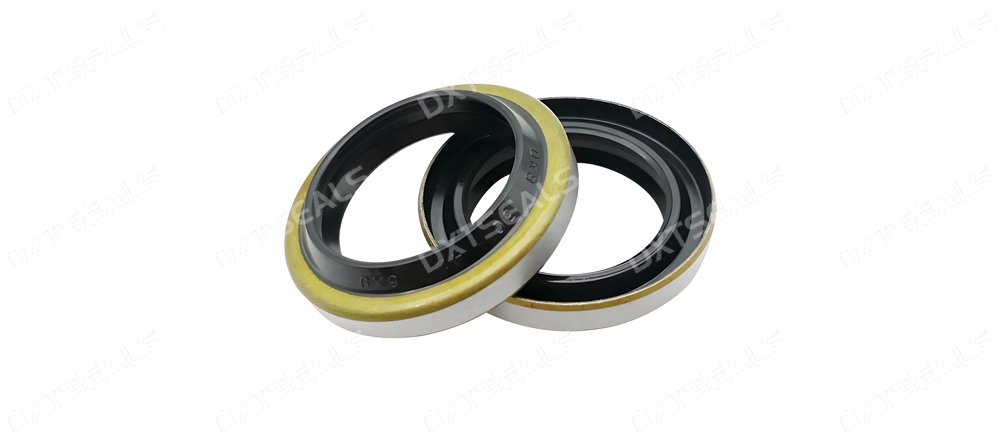
Oil seals—also known as rotary shaft seals, grease seals, or radial lip seals—play a vital role in preventing the leakage of lubricants and protecting mechanical components from dirt, water, and other contaminants. Whether in automotive systems or industrial machinery, oil seals help ensure performance, durability, and reliability.
In this article, we explore the most common applications of oil seals, along with detailed installation precautions to avoid failures and extend the lifespan of the equipment.
🔧 What Are Oil Seals?
Oil seals are mechanical devices that seal the interface between stationary and moving components, such as rotating shafts and housing. They are typically composed of:
-
An elastomeric body (e.g., NBR, FKM)
-
A metal case for structural integrity
-
A spring to maintain lip pressure
They serve two main functions:
-
Retain lubricants inside machinery or assemblies
-
Exclude contaminants like dust, dirt, or moisture from entering
🚀 Common Application Scenarios of Oil Seals
1. Automotive Industry
Oil seals are widely used in:
-
Engines
-
Transmissions
-
Wheel hubs
-
Differentials
These seals ensure that oil remains in the system and road contaminants stay out, contributing to smooth vehicle operation.
2. Industrial Gearboxes and Motors
In gear-driven systems, oil seals prevent lubricant leaks and protect gears and bearings from external pollutants, ensuring consistent performance and reduced maintenance.
3. Agricultural and Construction Equipment
Heavy-duty equipment requires oil seals that withstand harsh environments, including exposure to mud, water, and chemicals. These seals are essential for protecting the hydraulic systems and rotating parts.
4. Pumps and Compressors
Oil seals help maintain pressure and prevent leakage in pumps and compressors, even under high temperatures and fluctuating pressures.
5. Household Appliances
In washing machines and other rotating appliances, oil seals protect motor components and prevent water ingress into critical areas.
6. Marine and Offshore Equipment
Seals in propeller shafts, winches, and gear systems must resist saltwater corrosion and high-pressure environments.
⚠️ Oil Seal Installation Guidelines: Avoid Common Mistakes
Correct installation is key to maximizing the effectiveness and lifespan of oil seals. Here are essential best practices:
1. Ensure Shaft and Housing Cleanliness
Contaminants like dust or metal shavings can damage the sealing surface. Always clean the shaft and bore thoroughly before installation.
2. Check Shaft Surface Finish
A rough or damaged shaft surface can lead to leakage. Shaft surface roughness should typically be between 0.2 to 0.8 µm Ra for optimal seal performance.
3. Use Proper Installation Tools
Avoid hammering seals into place. Instead, use a seal press tool or driver to apply even force and avoid seal distortion.
4. Lubricate the Seal Lip
Before installation, lightly coat the sealing lip with compatible grease or oil. This minimizes friction during initial operation and prevents dry running.
5. Check for Proper Alignment
Misaligned seals can wear unevenly and lead to premature failure. Ensure concentric alignment between shaft and bore.
6. Avoid Overheating
Heat during installation (e.g., from nearby welding or excessive friction) can degrade the seal material. Keep installation temperature within seal material limits.
🛠️ Maintenance Tips for Long-Term Oil Seal Performance
-
Regularly inspect for wear, leakage, or hardened rubber
-
Replace seals proactively during scheduled maintenance
-
Monitor shaft condition—grooved or pitted shafts can damage new seals
-
Use high-quality seals from trusted suppliers like DXTSEALS for demanding environments
✅ Conclusion: The Right Seal, Properly Installed, Delivers Long-Term Value
Oil seals are fundamental components in countless mechanical systems. By understanding their key application areas and following best practices for installation, engineers and technicians can significantly improve system reliability and reduce maintenance costs.
At DXTSEALS, we provide customized oil seal solutions for automotive, industrial, and heavy-duty applications. Contact us to learn more about our sealing technologies and engineering support.
🔗 Explore Our Full Range of Oil Seals at www.dxtseals.com
📩 Need Technical Advice? Our Seal Experts Are Ready to Help!
